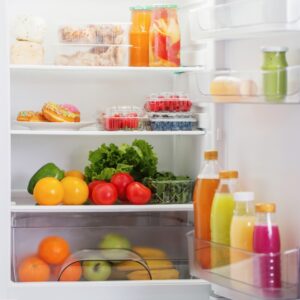Keeping Food Safe After Storms
go.ncsu.edu/readext?1029710
en Español / em Português
El inglés es el idioma de control de esta página. En la medida en que haya algún conflicto entre la traducción al inglés y la traducción, el inglés prevalece.
Al hacer clic en el enlace de traducción se activa un servicio de traducción gratuito para convertir la página al español. Al igual que con cualquier traducción por Internet, la conversión no es sensible al contexto y puede que no traduzca el texto en su significado original. NC State Extension no garantiza la exactitud del texto traducido. Por favor, tenga en cuenta que algunas aplicaciones y/o servicios pueden no funcionar como se espera cuando se traducen.
Português
Inglês é o idioma de controle desta página. Na medida que haja algum conflito entre o texto original em Inglês e a tradução, o Inglês prevalece.
Ao clicar no link de tradução, um serviço gratuito de tradução será ativado para converter a página para o Português. Como em qualquer tradução pela internet, a conversão não é sensivel ao contexto e pode não ocorrer a tradução para o significado orginal. O serviço de Extensão da Carolina do Norte (NC State Extension) não garante a exatidão do texto traduzido. Por favor, observe que algumas funções ou serviços podem não funcionar como esperado após a tradução.
English
English is the controlling language of this page. To the extent there is any conflict between the English text and the translation, English controls.
Clicking on the translation link activates a free translation service to convert the page to Spanish. As with any Internet translation, the conversion is not context-sensitive and may not translate the text to its original meaning. NC State Extension does not guarantee the accuracy of the translated text. Please note that some applications and/or services may not function as expected when translated.
Collapse ▲ Fall storms can leave us with a lot to clean up and go through. If your power has been out, you will need to know what foods are safe to keep and which foods you should discard. Usually, you can not tell by looking if a food is safe and you should never taste food to determine whether to keep it or not.
Fall storms can leave us with a lot to clean up and go through. If your power has been out, you will need to know what foods are safe to keep and which foods you should discard. Usually, you can not tell by looking if a food is safe and you should never taste food to determine whether to keep it or not.
If your home experiences a temporary power outage, here are some key reminders from the USDA so that you keep your food safe to eat.
- Monitor Temperatures: Keep an appliance thermometer in both the refrigerator and freezer. Make sure the refrigerator temperature is at 40°F or below and the freezer is at 0 F or below.
- 4-Hour Window: Your refrigerator will keep food safe for up to 4 hours during a power outage. After 4 hours without power, discard refrigerated perishable food. Meat, poultry, fish, eggs and leftovers must be thrown out.
- Use a food thermometer: You can check the internal temperature of foods and items such as milk or other liquids and if they are still below 40°F you can keep them.
- When in Doubt, Throw it Out: Never taste food to determine its safety. Evaluate each item separately by using this chart as a guide.
- Food Keeps Longer in a Freezer: If the doors stay closed, food will stay safe for up to 48 hours in a full freezer and 24 hours in a half-full freezer.
- Use a Cooler: Transfer food to a cooler and fill with ice or frozen gel packs. Make sure there is enough ice to keep food in the cooler at 40 F or below. Add more ice to the cooler as it begins to melt.
- Plan Ahead: Obtain dry ice or block ice if your power is going to be out for a prolonged period. Fifty pounds of dry ice should hold an 18-cubic-foot freezer for 2 days. (Caution: Do not touch dry ice with bare hands or place it in direct contact with food.)
If you have had some flooding there may be cautions you need to take. As individuals go through their kitchen and start to sift through their food, there are certain foods that are safe to keep and others that need to be tossed for safety reasons. Foods in waterproof food storage containers or commercially prepared jars, cans, and retort pouches that have contacted flood waters can be kept if they are properly cleaned and sanitized. For more information, see Safe Food After a Flood. If the flooding has only been in the garden, these are helpful tips from Nebraska Cooperative Extension.




